Light Comes to Shadow Mountain by Toni Buzzeo; Holiday House, 2023.
Set in the mountains of eastern Kentucky in the 1930s, Junior Library Guild Gold Standard Selection Light Comes to Shadow Mountain explores the onset of efforts to spread electrification to rural parts of the United States. Through story expertly drawn, this historical fiction novel also exemplifies the importance of having convictions grounded in facts while respecting others’ beliefs, and the value in seeking to understand both sides of an issue when forming an opinion or landing on a belief.
“Listening with open ears, even when it causes me discomfort, helps me to see more sides of a situation. Helps me figure out what I think and believe. It’s not always easy to take all those sides in. But my mind feels a mite bigger for trying.” ~ Cora, Light Comes to Shadow Mountain
Why this book? Why will it matter to kids?
Main character Cora is plucky, smart, and resourceful. She is kind, even when faced with challenges that thwart her earnest intentions. Middle graders will relate to her growing independence in thoughts and actions, and take away valuable insights from the manner in which Cora responds to the trials she encounters.
Levels and Layers of Learning
Grade level: 5-7
Social-Emotional Learning Themes
Acceptance, compassion, concern, connection, courage, creativity, curiosity, dedication, diligence, effort, empathy, empowerment, encouragement, fortitude, friendship, generosity of spirit, gratitude, helpfulness, hope, inspiration, integrity, kindness, loyalty, perseverance, persistence, perspective, resilience, resourcefulness, respect, responsibility, responsible decision-making, relationship building , self-assurance, self-awareness, self-management, self-reliance, social awareness, tenacity, understanding
Content Area Connections: American History, Science, ELA, Community, Arts
Using This Book in the Classroom
Hit the Ground Running Ready Resources for Educators, Homeschoolers, and Parents
Holiday House has posted a video of Toni reading aloud the first chapter of Light Comes to Shadow Mountain.
A discussion guide for Light Comes to Shadow Mountain is due soon from the publisher. I’ll post notice of it on this blog once it becomes available.
Visit Toni’s extensive website to learn more about her books.
Write Away! Ideas to prompt writing
Light Comes to Shadow Mountain is filled with poetic language: metaphors, similes, and personification (See discussion in interview below). Some of my favorites include:
- Her eyes shine like the stars
- Silver bark as smooth as river rocks
- The blanket of night
- A demon as fierce as that giant catfish folks say pulls people underwater
- [Her voice] is as firm as a newly planted fence post and as hard as sandstone
- My heart is as heavy as the willow laundry basket full of wet clothes
- The reds of the sourwood and sumac shout their glory
- My heart sets to pounding like a woodpecker in the spring
Have students close read Light Comes to Shadow Mountain for their favorite examples of poetic devices. List and discuss. Have students use the examples as inspiration for creating their own comparisons when writing on a specified topic.
In darkness we can better see the stars is something Cora remembers Papaw having said. It comes to her at various times in the story. On page 217, Cora is facing a tense situation and, in that moment, both sides of the issue of bringing electrification to her rural community become clearer to her. Reread this scene (and perhaps others in which Cora comes to an important realization, such as in the hospital room on pp. 238-241) and then write about a time when you gained insight about something you were struggling to understand.
As the girls work on their school newspaper, they critique each other’s articles. (See pp. 130-131 and 182-187.) Discuss how they worked together and what techniques they used. Encourage students to try some of the girls’ practices when working with writing partners on their own writing pieces.
Throughout the story Cora struggles to understand various characters’ points of view and opinions about electrification. Tell about an issue you feel strongly about. How can you strive to grasp both sides of the issue as you form your opinion or belief?
Poetry Break Related poetry to recite before or following the reading of this book
Poetry breaks fit perfectly into brief moments in the school day—from opening or closing exercises to lining up for lunch; from zipping up backpacks and jackets to transitioning from one subject to the next. Reading a poem typically takes less than a minute; yet, it can introduce or reinforce a concept, provide clarity, celebrate language, exemplify rhythm, enhance vocabulary, expand understanding of a concept, increase attention span, initiate reflection, spark imagination, or simply summon a giggle. And, poetry soothes and strengthens the spirit.
“Poetry builds resilience in kids and adults; it fosters Social and Emotional Learning. A well-crafted phrase or two in a poem can help us see an experience in an entirely new way.” ~ Elena Aguilar
Below is information on newly released poetry books of note.
Welcome to the Wonder House poems by Rebecca Kai Dotlich and Georgia Heard, illustrated by Deborah Freedman is a collection of twenty-nine poems in twelve “rooms” with imaginative mixed media illustrations sure to set readers to wondering. In connection with this month’s post, see especially “Room of Science” pp. 14-15 and “Room of Wishes” pp. 26-27.
Learn more about the book and find a tribute to and resources for Mary Ann Hoberman’s poetry on Deborah Freedman’s website.
Smoke at the Pentagon: Poems to Remember by Jacqueline Jules, illustrated by Eszter Anna Rácz tells the story of the September 11, 2001 attack on the Pentagon in Arlington, Virginia in poems written from the points of view of young people from various parts of the community, and derived from personal experiences.
Find more information about Jacqueline Jules and her poetry books in this earlier Children’s Book Corner post.
And Then There’s This…
Enrichment activities, related books, online resources, craft projects, and ideas for further study
Read the extensive back matter in Light Comes to Shadow Mountain, which includes “More to Know” facts about various aspects of the novel, such as the Frontier Nursing Service, the Pack Horse Library Project, and the Rural Electrification Administration; and the Author’s Note and Acknowledgments.
View and learn more about Toni’s beloved writing cottage in a video narrated by the author.

Photo credit: Sasha Salzberg
Two recent interviews with Toni discussing Light Comes to Shadow Mountain can be found here and here.
Additional interviews with Toni.
Related Books of Interest:
A Life Electric: The Story of Nikola Tesla by Azadeh Westergaard, illustrated by Júlia Sardá
Electrical Wizard: How Nikola Tesla Lit Up the World by Elizabeth Rusch, illustrated by Oliver Dominguez
Three books that inspired Toni’s novel:
Down Cut Shin Creek by Jeanne Cannella Schmitzer
Mary on Horseback by Kathi Appelt
Wide Neighborhoods: A Story of the Frontier Nursing Service by Mary Breckinridge
Meet the Author
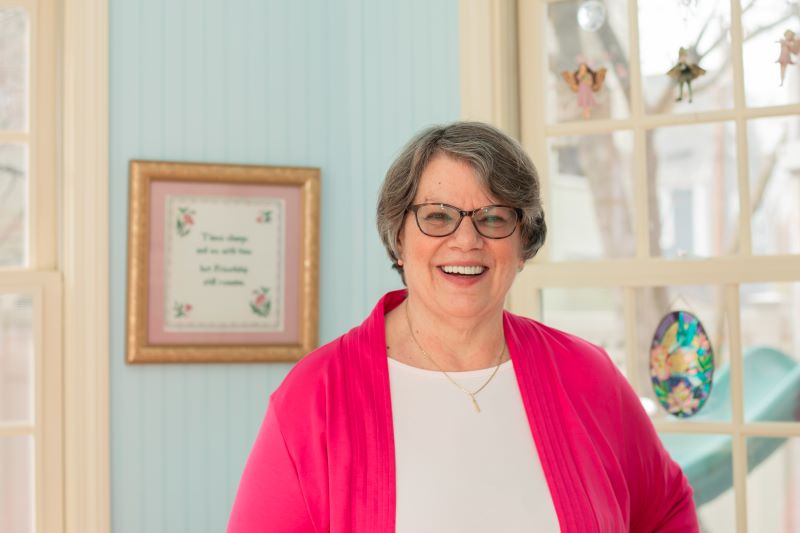
Photo credit: Elyse Pono Photography
Toni Buzzeo
Toni Buzzeo is the New York Times bestselling children’s author of thirty-one picture books and board books and her first middle grade novel, Light Comes to Shadow Mountain (Holiday House, 2023), a Junior Library Guild Gold Standard selection. A former librarian and writing teacher, Toni and her books have won many awards, including a 2013 Caldecott Honor for One Cool Friend, illustrated by David Small. Her fictional characters sing with her deep understanding of human emotion. Endlessly enthusiastic, Toni draws on her career experiences as a school librarian in crafting her books and speaking with young audiences in schools and libraries. Toni lives in Arlington, Massachusetts just downstairs from her two lovable grandchildren (endless sources of inspiration!). She writes out back in a beautiful writing cottage built by her husband, Ken Cyll.
Backstory: Q & A with Toni Buzzeo
Toni and I go back decades, first connecting when we were both writing professional resources for educators and monthly columns for LibrarySparks. I invited her to sit on educator panels I moderated and have celebrated her many children’s book triumphs over the years. She was among the first authors to be featured on the Children’s Book Corner blog with her picture book biography, When Sue Met Sue: Sue Hendrickson Discovers Her T. Rex. It is with great joy that I welcome Toni back to Children’s Book Corner this month to discuss her debut novel, Light Comes to Shadow Mountain.
Judy Bradbury: Tell us about this project: how you came to write a historical fiction middle grade novel set in the 1930s in the eastern Kentucky mountains on the brink of joining cities in receiving electricity.
Toni Buzzeo: Believe it or not, as you mentioned in your introduction, this novel began its life as a picture book a decade ago! I was a successful picture book writer at the time, so it makes sense as I look back. As my Caldecott Honor-winning book, One Cool Friend (Dial, 2012), brilliantly illustrated by David Small, was making its way into the world, I’d written and submitted a 1,300-word story about a girl named Cora Mae Tipton who lived with her family in the mountains of Eastern Kentucky without electricity in 1937. It was my brilliant editor, Kelly Loughman, who told me that what I’d written was not so much a picture book as the beginning of a much longer work, a middle grade novel. I said no—silly, short-sighted woman that I was.
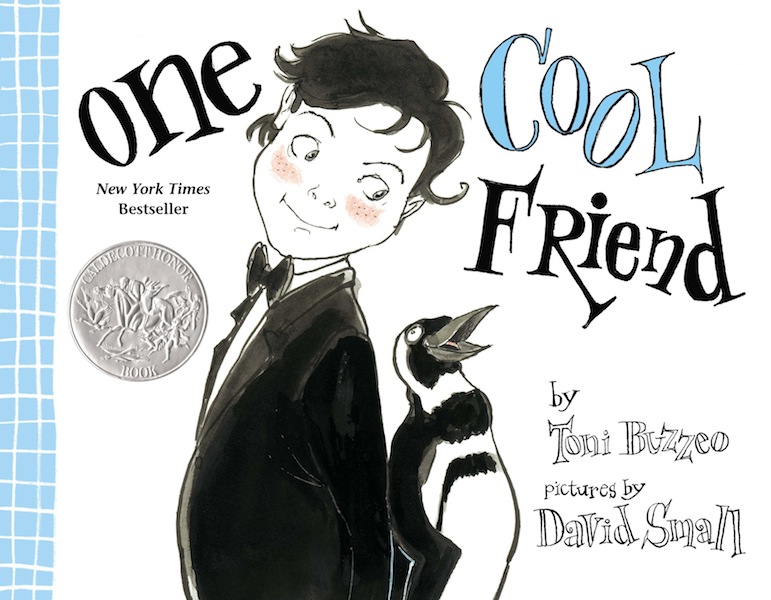
Instead, I went on to publish additional picture books, including When Sue Found Sue: Sue Hendrickson Discovers Her T. Rex (Abrams, 2019) in which I explored the life of famous self-taught archaeologist and paleontologist Sue Hendrickson, beginning with the in-born traits that led her to become a “finder” of great renown. I thought about how some crucial elements of a person are there from the very earliest years, and I wondered about Cora Mae and what her essential personality traits might be and how they might show themselves by the age of eleven.
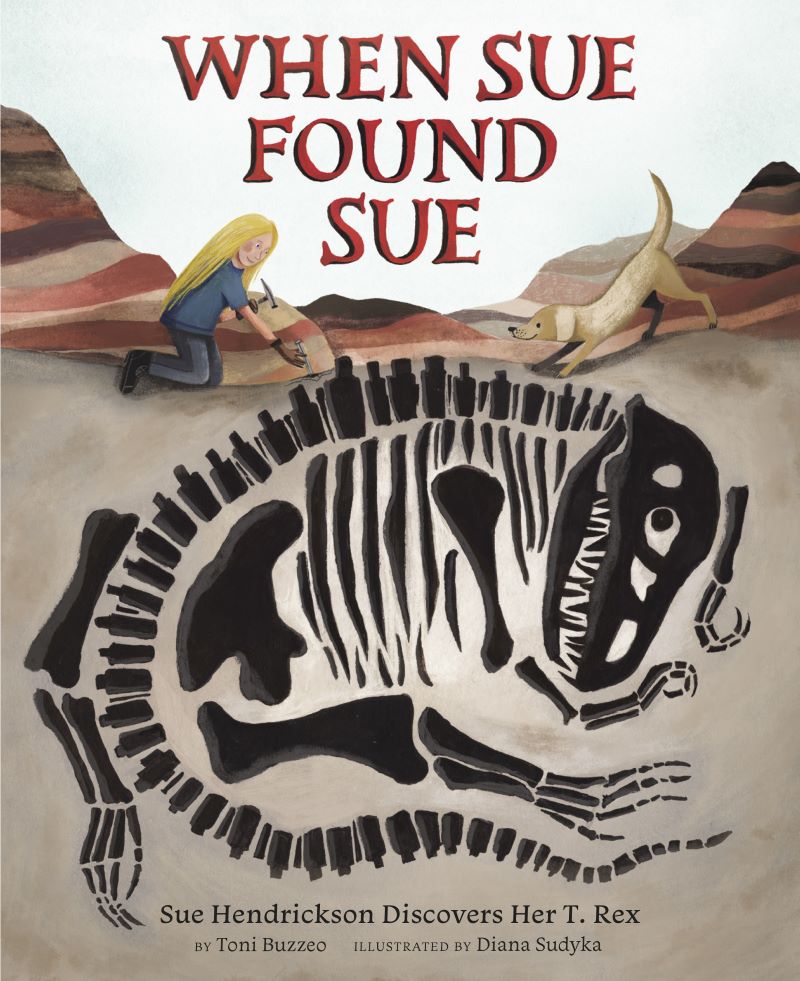
Cora’s story grew within me as I learned more and more about the Frontier Nursing Service, the Pack Horse Library Project, and President Roosevelt’s Rural Electrification Act. To think that in a very modern United States of America, there were places without medical services, without libraries, and without electricity tugged at my heart and my mind too. I wanted to learn how that life was lived, the advantages of that life as seen by those who loved the living of it, and the quest, by some, for something more. Cora with her in-born curiosity and her skill as a writer became my vehicle for exploring that moment of change and transformation. I truly felt like I experienced it with her as I succumbed at last and set out to write the novel that Kelly knew was there all along.
JB: Tell about one hurdle you experienced in the creation of Light Comes to Shadow Mountain, or provide a memorable (or humorous!) anecdote related to the writing of the book.
TB: **SPOILER ALERT!!**
I was well into the conceiving and writing of this novel with one huge roadblock lurking ahead. The constant question playing in my mind: What person, event, or thing, grounded in the external world of the story, could ever make Mommy change her mind about opposing electricity? Of course, along with Cora I hoped that Mommy would ultimately see the light (so to speak), but I didn’t know whether I’d be able to find something more than her heart simply softening, which was not a solid enough explanation for my readers. Then, one hot July day in Davie, Florida I was on a writing retreat with two other writing friends, Dorian Cirrone and Kathy MacDonald. That day, I placed a call to Librarian Trenia Napier at Eastern Kentucky University Libraries. As I write in my acknowledgements, I owe her a deep debt of gratitude, for it was she who found the turnkey of the story—the article by Dr. James W. Bruce about the incubator made with a 40-watt lightbulb that ultimately saved Radiance Grace’s life and changed Mommy’s mind.
Furthermore, Librarian Carla Townsend of the Frontier Nursing Services University was next able to assure me that Hyden Hospital had electricity at the time of the story in 1937. Thus, it was feasible for Nurse Bailey to have created such an incubator there.
JB: What would surprise readers to learn about you or about the writing of Light Comes to Shadow Mountain?
TB: So many children’s writers I have heard speak over the past decades talk about loving to write as children. They talk about mothers who collected the many stories–or even books–they wrote as children. I’ve seen images of their many young works projected onto presentation screens.
Not I! I don’t remember writing much as a child (though I was quite fond of the cartridge ink pen we were allowed to graduate to in fourth grade when our Palmer Method handwriting passed muster). Nor do I have any saved evidence of my childhood written work, but that’s likely more about the unsentimentality and practicality of my mother in a 920-square-foot house with six inhabitants than solid proof that I didn’t write. It wasn’t until my teenage years that I tried my hand at writing. And it wasn’t until I was in college that any teacher ever thought to tell me that I was a talented writer, though I’d be willing to bet that I had been one all along!
JB: What question(s) does your story consider, or what do you hope readers will take away from Light Comes to Shadow Mountain?
TB: I can’t limit myself to one question or take-away because there are several. The questions are:
- How do we reconcile our own beliefs and desires with the beliefs of others that are in direct opposition to ours?
- When the opposing beliefs are between adults and children, must a child always bend to the will of the adults?
- How can a parent and child find common ground in these circumstances?
As to messages, or take-aways, they are:
- Children’s beliefs and goals deserve careful attention and consideration from adults. Children need to be heard.
- The way to reconcile deeply held but opposing beliefs or goals is to listen attentively and try to achieve genuine understanding on both sides.
JB: Who is your target audience?
TB: My target audience is children ages nine to thirteen and the adults who interact with them and nurture them in families and schools.
JB: How do you see Light Comes to Shadow Mountain connecting to curriculum or being used in schools?
TB: As a lifelong educator, this is my deepest wish—that kids encounter this book not only on their own, in libraries and bookstores, but that they also come to it at school. The book is rich with history of a time and place many kids outside of the mountains of Eastern Kentucky have little knowledge of. I hope that teachers will use the book as a companion to Social Studies units on the Great Depression, President Roosevelt’s New Deal America, and the effects of new technology on families and communities (something we still grapple with today).
But, as you point out in the next question, I also hope that the book will be read and appreciated in Language Arts classes for its use of poetic devices. In addition, I hope it is studied for its careful plotting and character building, as well, and its rich portrayal of a unique setting.
JB: As I read Light Comes to Shadow Mountain, one of the elements that I appreciated most was your poetic language: your generous employment of similes, metaphors, and personification to describe feelings, setting, thoughts, and actions. Tell us about that aspect of your novel.
TB: I began my life as a poet during my teenage years when I checked out stacks of poetry from the 800s section of the Snow Branch Public Library in Dearborn, Michigan and copied out my favorite poems into notebooks. This led me to write my own poetry and eventually to publish some of it in the Literary Arts Journal at the University of Michigan Dearborn. As way leads on to way, I later launched a career as a picture book writer and employed all the skills I had learned as a poet. I didn’t consciously choose to also employ these skills in writing my novel. It simply came naturally! And I’m so glad it did. I love the effect of the poetic, lyrical language in defining setting, characters, and emotion. One additional thing that I particularly enjoyed was presenting the natural world, the flora and fauna, by including them in metaphor and simile!
JB: One of the themes that runs through Light Comes to Shadow Mountain is the importance of looking at both sides of an issue. Can you explain why you feel this is important to present to middle grade readers?
TB: Oh my goodness, I think our entire deeply polarized SOCIETY needs to understand the importance of looking at both sides of an issue! And the only way that we can hope to achieve that is to start with children.
In terms of the story itself, though, it was an important matter that Cora, who wants so much to be a journalist like her heroine Nelly Bly, learn this essential skill in presenting an issue. It was interesting to look closely at journalism in the era I was writing about (1930’s America) and see the efforts then to present both sides of an issue. In this day of partisan media, kids encounter much less of that than even we adults did in our own childhoods.
JB: What is one question you wish I had asked, and what is your answer?
TB: Where did Cora’s name come from? I did so much research to uncover personal and family names of the particular region of the Eastern Kentucky mountains where the novel is set. I included many that I found. I encountered the name Tipton during that research, for instance. And Cora’s middle name, Mae, is in honor of my grandmother. As for Cora, that name came to me completely unbidden, along with Cora’s very distinct voice!
JB: What project are you currently working on?
TB: My Holiday House editor, Kelly Loughman, and I are currently working on my middle grade colonial time-travel novel in which a contemporary twelve-year-old, Sam Emery, travels to 1770 Maine Territory on the brink of the Revolutionary War, where the King’s mast pines are much more the focus of Colonial ire than the King’s imposed taxes are further south in the Massachusetts colony.
And, of course, there is always a stack of picture book manuscripts. The next will be published by Grace Maccarone at Holiday House. The working title is BUZZ! A Guidebook to Being Brave around Buzzy, Stinging Insects.
Meet the Novel’s Map and Jacket Art Illustrator
Learn more about David Dean, creator of the map and cover for Light Comes to Shadow Mountain, and find him on Instagram.
Image from Light Comes to Shadow Mountain by Toni Buzzeo courtesy of Holiday House Publishing, Inc.
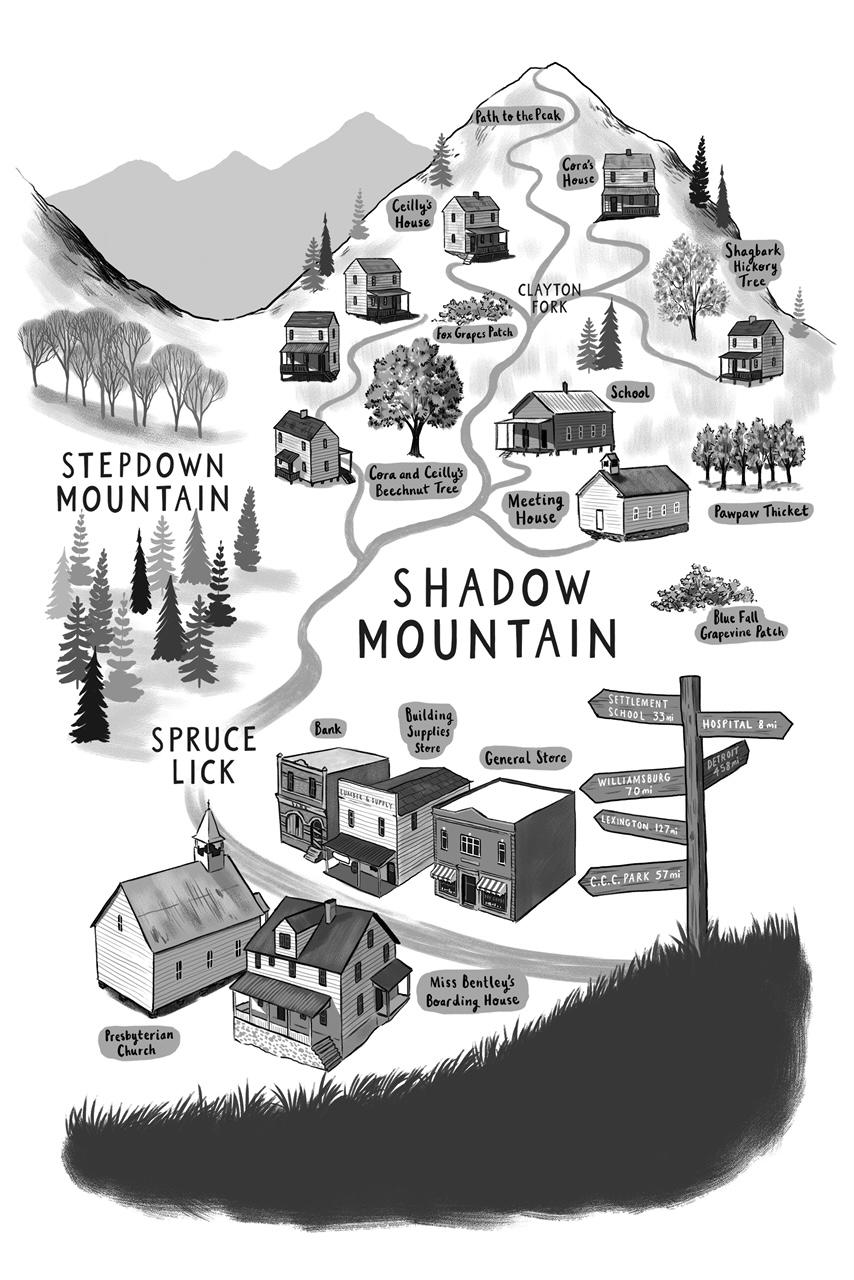
Sidebar Spotlight New releases of note
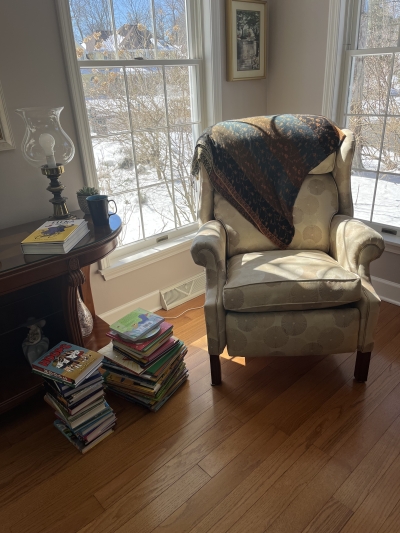
Each month I receive several boxes of books to review from various publishers. As I read and peruse the books, I place them in two piles: those that I will consider featuring on the blog, and those that don’t fit the mission or theme of Children’s Book Corner blog for whatever reason. I highlight some of the books in the “possible” pile on Mondays (most weeks) on Instagram. Ultimately, I choose the one new release I will feature on my monthly blog post. Yet there are many terrific books I wish I could give a shout-out to, even if I can’t write an entire post about each one. So, Sidebar Spotlight is a means of giving a nod to new releases that, in my opinion, are noteworthy. I’ve linked each title to Bookshop so you can learn more. Happy reading, friends! And feel free to comment on these or other new books below.
Accessible to the youngest of listeners, Give by Jen Arena, illustrated by Rahele Jomepour Bell with oil on paper layered and modified in Photoshop, is a simple, spare, and warm reminder of the ripple effect of simple acts of kindness. The detailed illustrations and satisfying story circle will sustain multiple readings.
The Harriet chapter book series (Just Harriet, Harriet Spies) by Elana K. Arnold for ages 8-10 features well-drawn characters, and the inner conflicts of the spunky titular protagonist are relatable and authentic. Harriet’s adventures, two humorous pets, and the mysteries in each book will keep young readers engaged.
Pitch perfect for its audience, Mr. S by Monica Arnaldo is an entertaining mystery that takes place on the first day of kindergarten. Humorous, sly, and utterly giggle-inducing, it’s two stories—one told in words and one relayed in parallel illustrations that cleverly reveal the clues to the “mysterious” plot line. Brilliant.
Salat in Secret by Jamilah Thompkins-Bigelow and illustrated by Hatem Aly is a picture book story that will inform and enlighten young listeners about the special salat rug and the importance for observant Muslims of reciting daily prayers on time.
With its exuberance and bright illustrations, This Train Is Bound for Glory by Alice Faye Duncan and illustrated by Paul Kellam is a lively and age-appropriate introduction to spirituals for Grades K-4 that will have listeners snapping their fingers, tapping their feet, and joining in the refrain. Excellent back matter. Ideal for Juneteenth celebrations.
Under the Blanket Sky by Tim Fischer is a beautifully rendered, quiet, and reflective friendship fantasy set in idyllic rambling summer fields. Ages 4-8.
We Are Going to Be Pals! by Mark Teague is a delightful tongue-in-cheek picture book exploring friendship by way of the symbiotic relationship between an egret (very chatty) and a go-along rhino. Each page turn leads to successive full-page spreads that entertain and add to a comical package that is sure to result in requests for repeat read-alouds.
News, Updates, & Items of Interest
I’m booking dates! Contact me for 2023-24 school visit information.
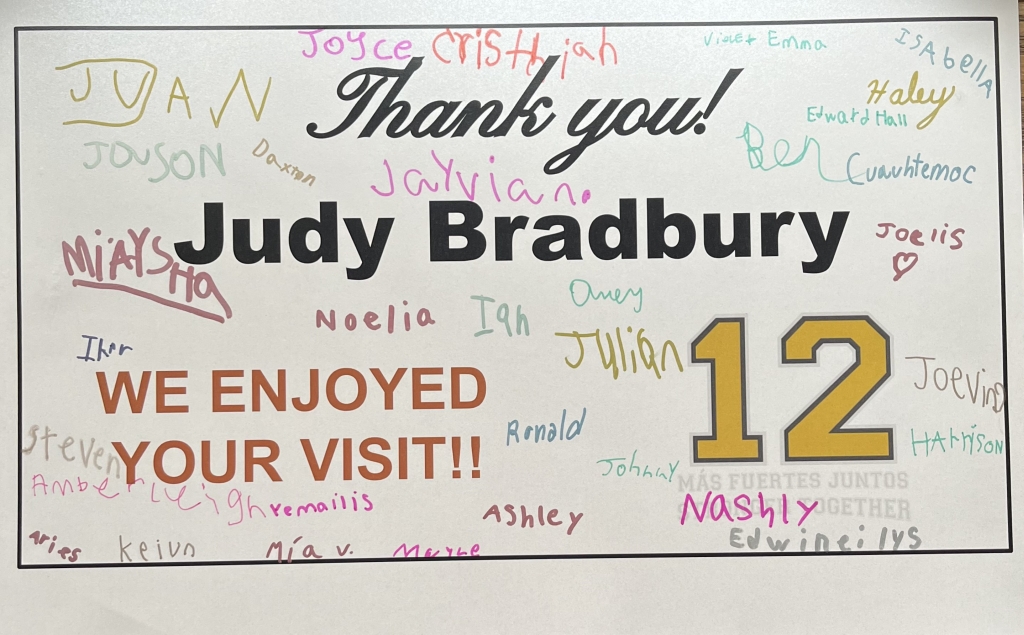
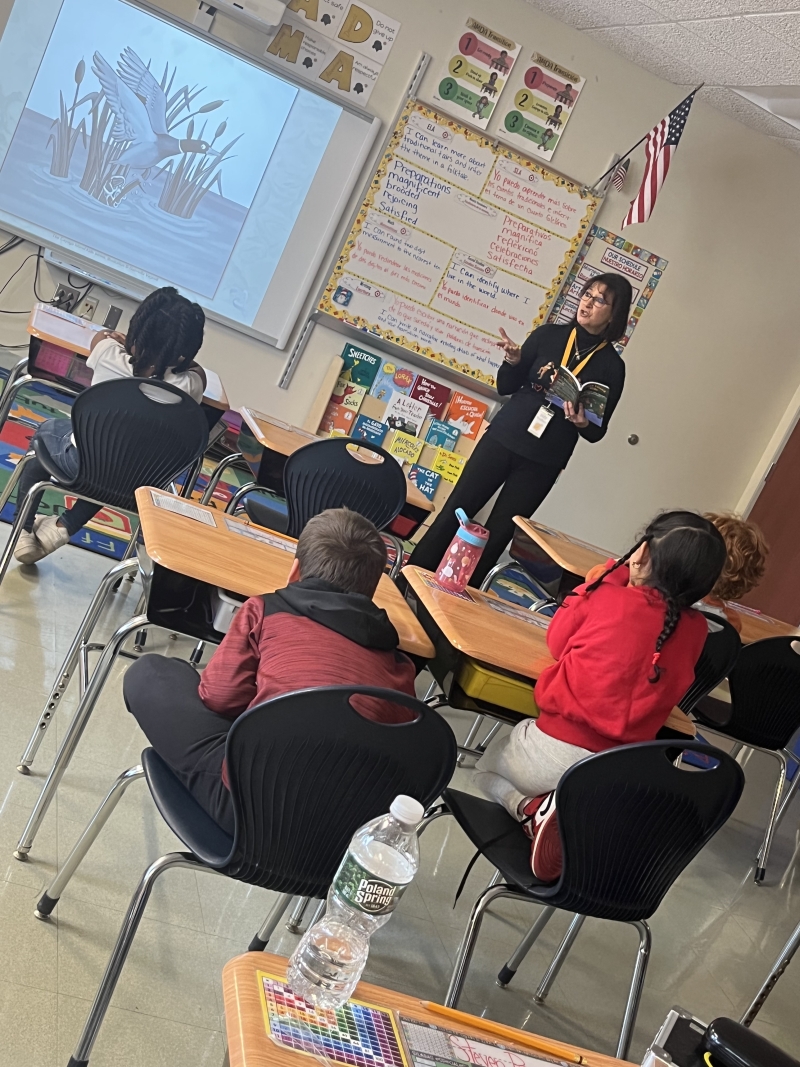
Read-aloud of a portion of Cayuga Island Kids Book 2, The Adventure of the Big Fish by the Small Creek
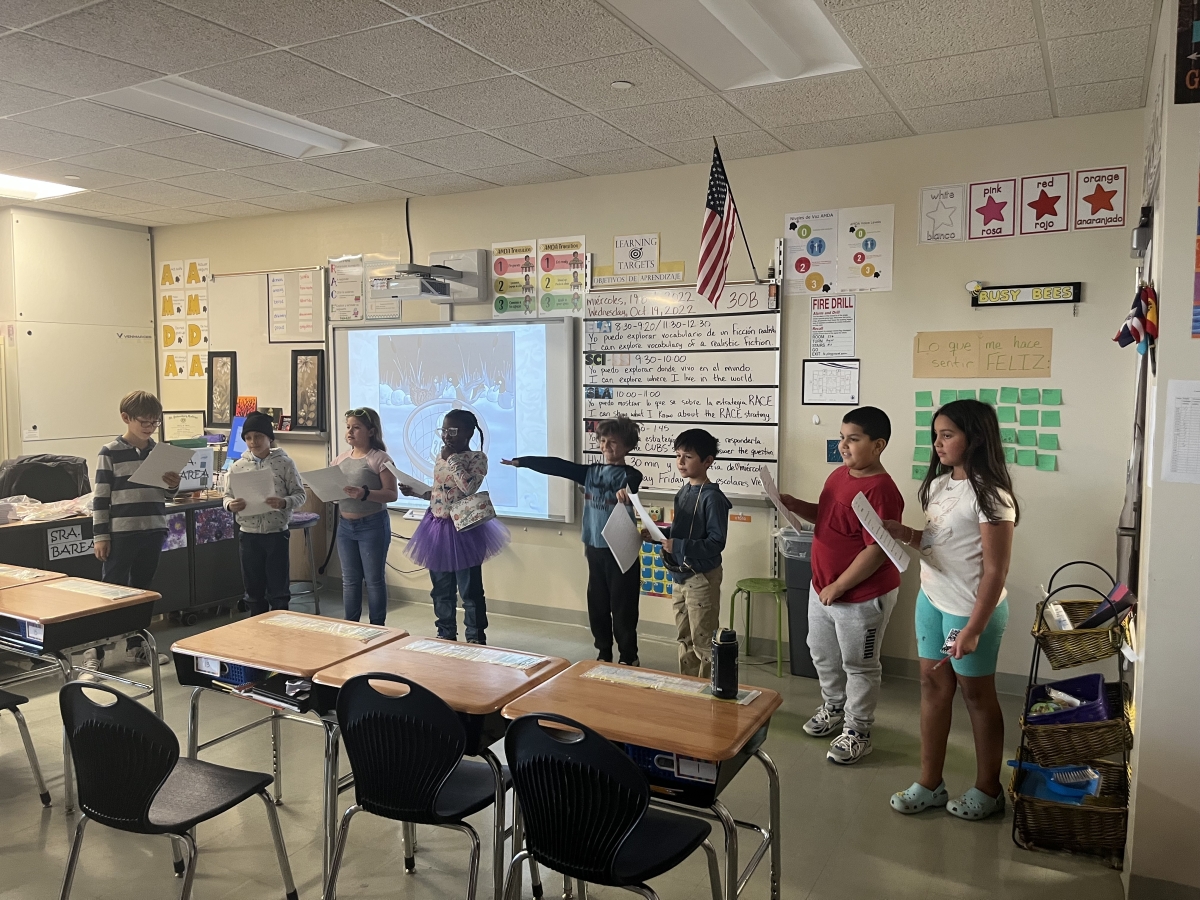
Readers Theater, complete with props!
September 15th marks the release of the Cayuga Island Kids series packaged as a set! Find it at your favorite bookshop or purchase it directly from the publisher. Individual titles are also available in hard, softcover, and e-book versions.
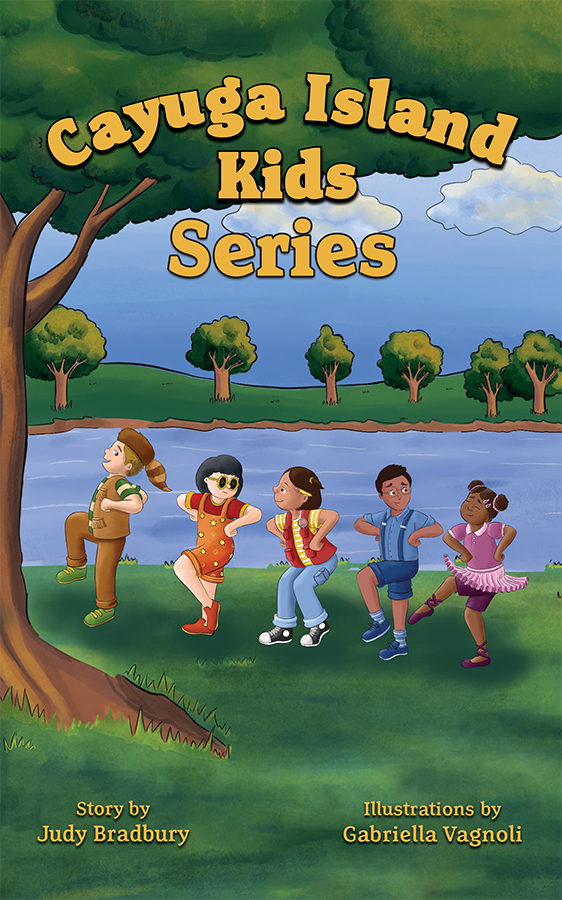
Find where my books and I will be on my Events page.
Kindness tip: If you read and like a book, consider posting a review on GoodReads, social media, or on Amazon (if you bought it there). Authors and illustrators appreciate the shout-out. Even a one-sentence comment increases visibility of a book. Also consider placing a request with your local library to purchase a copy–another free way to support a book you recommend!
ALA’s Office for Intellectual Freedom reports 1,269 demands to censor library books and resources in 2022 (the most recent stats), “the highest number of attempted book bans since ALA began compiling data about censorship in libraries more than 20 years ago.” Plan to support the right to read during Banned Books Week, October 1-7. Find resources, downloads, and more on the ALA website.
Many publishers offer handy educator guides, videos, and downloadable activities for their children’s and YA titles. Check their websites for these free materials under Educator or Library Resources. Just a few notable examples include HarperCollins, Candlewick Press, and Astra Publishing. I’ll post additional links next month. Have a favorite? Let me know!
Fall Children’s Book Week is scheduled for November 6-12. Sign up to participate and receive three free copies of Rilla Alexander’s poster. You will also have access to a new educator kit coming out this month. Learn more. Email Children’s Book Council with questions.
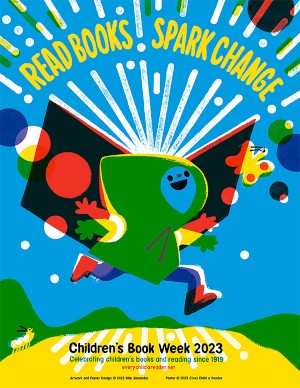
Learn more about the artist’s inspiration for the design.
Over to You…
Join the conversation! Offer your thoughts on the featured prompt related to this month’s post:
What recently published historical fiction novel for middle graders do you recommend? Share the title and author of the book in the comments section.
You are also welcome to post a general comment.
NEWS FLASH!
In celebration of the new school year and the return of the Children’s Book Corner monthly posts, we are offering Children’s Book Corner Subscribers the chance to win a copy of Toni’s novel! Comment on the question above or on any of Toni’s book(s) to be entered in the raffle!
Not a subscriber? Sign up here!
Thanks for sharing!
Final Thought
“The day when we shall know exactly what ‘electricity’ is will chronicle an event probably greater, more important than any other recorded in the history of the human race. The time will come when the comfort, the very existence, perhaps, of man will depend upon that wonderful agente kind, for everyone you meet is fighting a hard battle.” ~ Nikola Tesla

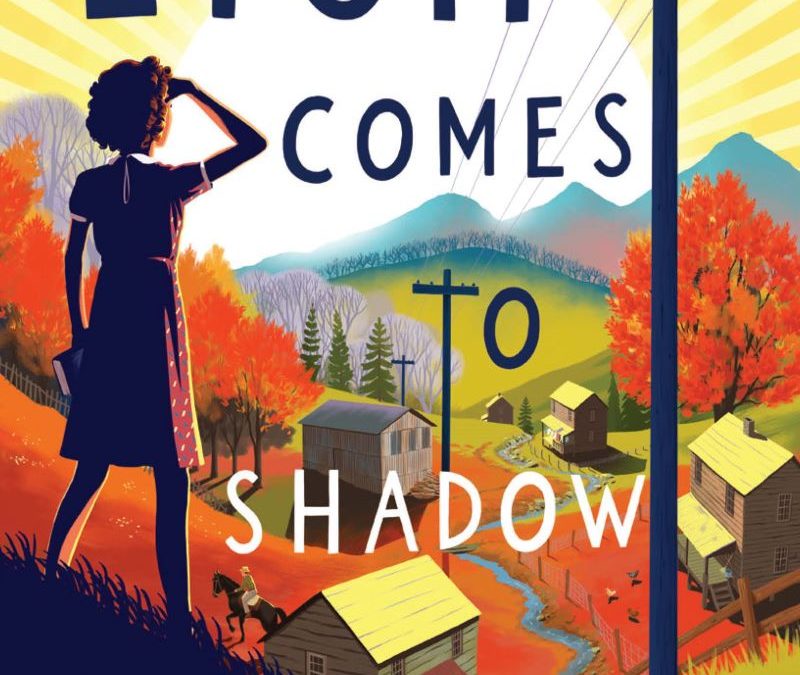
Judy,
Thank you for these very in-depth posts and interviews! I am definitely intrigued by Light Comes to Shadow Mountain and am adding it to my reading list. Can’t wait to check it out!
Deb, you will not be disappointed in this novel! It’s a stunner. Thanks for writing in and for your kind comments. Happy reading!
I love Toni’s comment: “I think our entire deeply polarized SOCIETY needs to understand the importance of looking at both sides of an issue! And the only way that we can hope to achieve that is to start with children.”
If I hadn’t already been planning on reading the book, that thought would have convinced me!
Thanks for your comment, Vivian. I couldn’t agree more, and I know you won’t be disappointed in this book! Enjoy!